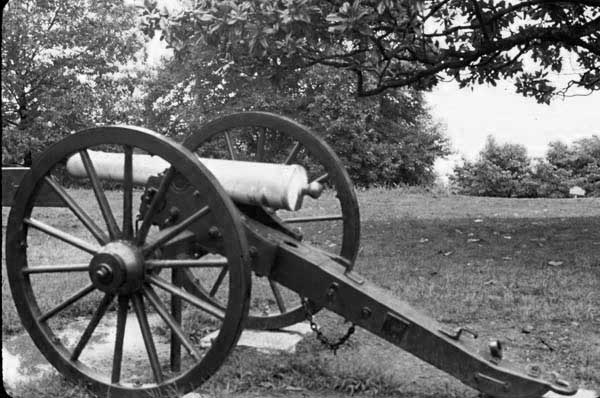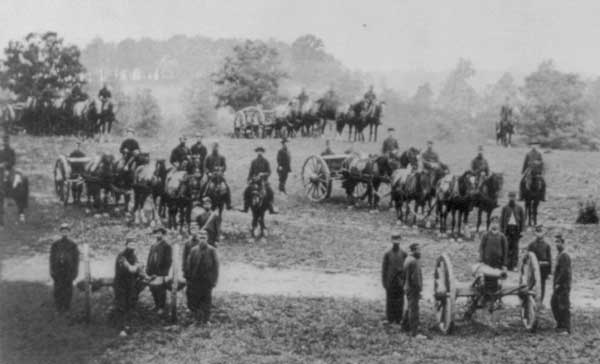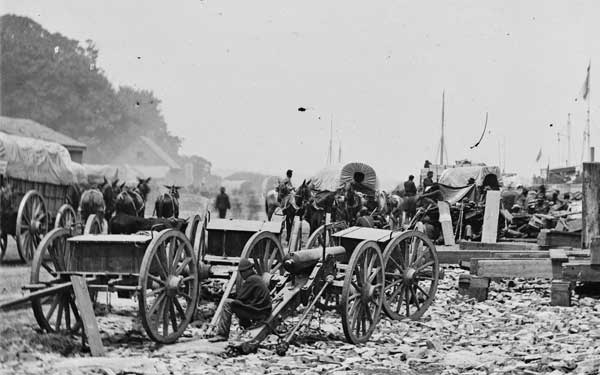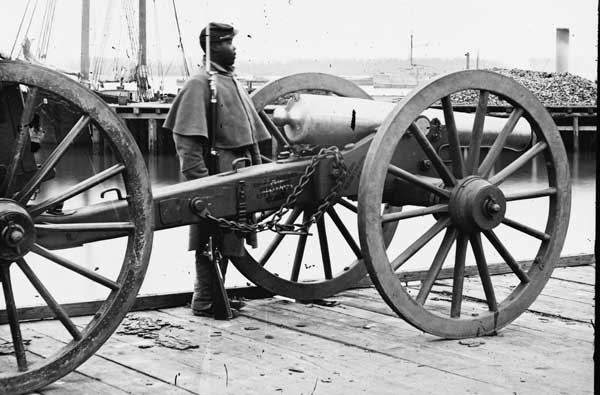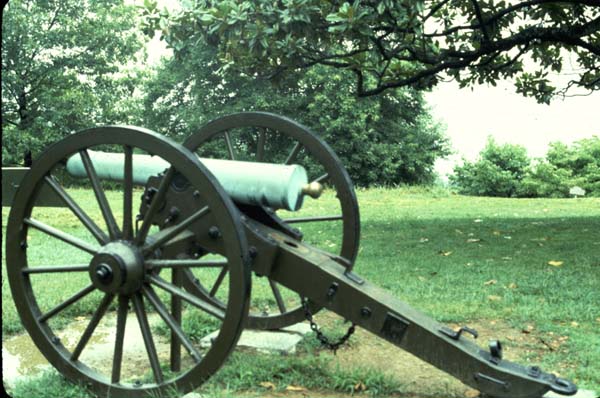
A National Park Service Artillery Demonstration at Petersburg around 1980

This is the paint used on artillery carriages, etc.
According to "Field Artillery Weapons of the Civil War" by James C. Hazlett, Edwin Oldstead, and M. Hume Parks -
"a careful analysis of the paint formula will reveal that "olive" color is actually almost mustard with a greenish tint. Olive paint was used on the wood parts" ... "All metal parts were painted a flat black"
Bronze gun barrels were not painted, but iron or steel barrels were painted black
Here is a table from the "Ordnance Manual of the Confederacy" listing quantities of paint required to complete various projects
| Kind of Carriage | Lead color | Olive | Black |
| Lbs. | Lbs. | Lbs. | |
| Field gun-carriage and limber with implements | 6 | 10 | .75 |
| Caisson with limber and implements etc. | 8 | 15 | .8 |
| Forge with limber | 6 | 10 | 1 |
| Battery-wagon with limber | 7 | 13 | .9 |
| Casemate carriage and chassis wooden | 7 | 14 | .75 |
| Barbette carriage and chassis wooden | 6 | 11 | 1 |
If you want to make some paint for yourself - the formula is in reprints of the Ordnance Manuals of the time.
Olive Paint is made from the following ingredients and proportions -
Two versions of liquid olive color are listed
| Olive paste | 61.5 | see formula below |
| Boiled oil | 29.5 | this is the boiled grade of linseed oil - available from a hardware store |
| Spirits of turpentine | 5.5 | available from a hardware store |
| Dryings | 3.5 | Mixture of copperas (iron sulphate) and litharge used in ancient process of boiling oil, with turpentine and boiled oil added This is probably not practical to find, without boiling your own linseed oil. I suppose a modern drying agent might do the same job or perhaps this ingredient may be unnecessary because modern "boiled" linseed oil contains drying agents. |
| Japan varnish | 2 | black varnish - I haven't found a source for the original article |
Olive Paste is made from-
| Yellow ochre - pulverized | 68 | a wide variety of yellow ochre pigments are available from art supply dealers |
| Lampblack | 1.1 | also known as soot - check art supply dealers |
| Boiled oil | 37 | this is the boiled grade of linseed oil - available from a hardware store |
| Spirits of turpentine | 0.4 | available from a hardware store |
or
| Yellow ochre (French) | 46 | a wide variety of yellow ochre pigments are available from art supply dealers |
| Boiled oil (raw 45) | 40 | this is the boiled (or raw) grade of linseed oil - available from a hardware store |
| Litharge | 5 | red or yellow lead oxide - A lead based crystalline powder |
| Lampblack | 2 | commonly known as soot |
| Spirits of turpentine | 5 | available from a hardware store |
| Japan varnish | 2 | black varnish - I haven't found a source for the original article |
Given this formula, it appears that yellow ochre is the major pigment in this paint.
A search on the internet reveals that yellow ochre combined with lead white and a shade of black (perhaps lampblack) to get verdaccio - a greenish khaki color. This is from - "http://www.sewanee.edu/chem/chem&art/Detail_Pages/Pigments/Yellow_ochre" . Another example of yellow ochre on the web is at - "http://www.rfpaints.com/6-ColorCharts/MarsYellowLt.htm" It also states that is does not preserve well and that it is used to make flesh tones.
It would be interesting to know if any reenactors have tried reproducing
this paint. I think I would omit the Litharge, which is largely
lead, perhaps just adding a bit of red pigment to make up for
it. The oil
would be linseed oil. Japan varnish is largely oil, with a dollops
of a few other ingredients including litharge, red lead, turpentine,
umber, shellac and white vitriol.
So it sounds like greenish mustard is about right . Perhaps it comes out something like the background on this page which turns out to be a cross between mustard and olive on the Netscape color picker. Remember everyone's monitor renders colors differently, so you may not see what I see. If anyone has reproduced this paint from the original formula, let me know how close this guess is to what you made.
